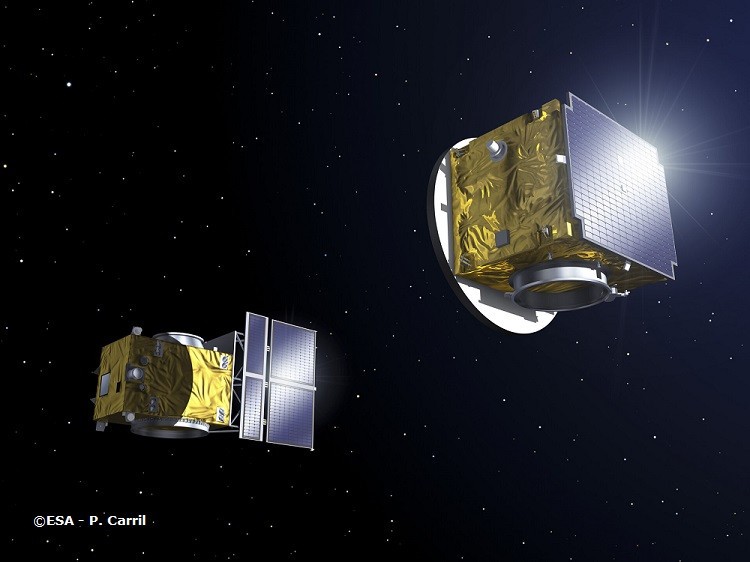Proba-3 enters its final testing phase

The environmental testing campaign was recently completed for the Proba‑3 demonstration mission, with successful results. This testing took place in Ottobrunn, Germany, and it was able to confirm that the mission’s various equipment elements can withstand the conditions generated during launching, as well as the thermal conditions that will exist once the satellites are in orbit. The campaign included a range of activation tests for the mission’s various mechanisms, along with a full verification of the propulsion system.
Proba-3 is a technological demonstration mission of the European Space Agency (ESA), and its purpose is to provide a technological demonstration of high-precision formation flying by two platforms in space. With its launch planned for 2024, the mission consists of two satellites that will fly in formation, to observe a part of the sun that is normally hidden from view.
This is an especially ambitious mission for several reasons, including the high level of autonomy generated by the onboard algorithms, and because of the related operations and coordination needed for the two platforms, which will be travelling through space at a very close distance to each other.
The Proba-3 mission is being developed by an industry team led by Sener, with participation by more than 29 companies from 14 countries.
In the context of Proba-3, GMV is responsible for the formation flying subsystem (FFS), which is one of the mission’s most important and complex onboard elements. The company’s role includes design, development, and validation of the onboard software for that subsystem, in a simulation environment that represents the onboard computer and electrical interfaces. GMV is also responsible for providing the flight dynamics system for the ground infrastructure, which is responsible for monitoring, flight control, orbit determination, and prediction of events and maneuvers. For the FFS, GMV in Spain is collaborating with Sener, which is responsible for the control system and failure detection, isolation, and recovery (FDIR) system. GMV in Spain is also working with the Canadian company NGC, which is responsible for the attitude and orbit control system (AOCS), and with GMV in Poland, which is in charge of designing, implementing, and testing the onboard function that uses GPS measurements to calculate relative positioning of the satellites.
First high-precision formation flying mission
Proba-3 is the world’s first space mission focused on high-precision formation flying. The mission’s two satellites, Occulter and Coronagraph, will fly in formation to create a large virtual rigid structure, at a distance of about 150 meters from each other, with a level of precision that can be measured in millimeters and arc seconds.
As the Proba-3 satellites travel through space, the separation between them will produce a shadow that will block the intense light from the sun, to reveal details of its surrounding corona that are normally hidden from view. The two systems weigh 350 kilograms and 200 kilograms, respectively, and they will be controlled in space using a lens and a detector. This virtual rigid structure will be able to respond to rotation and direction commands, to produce any orientation desired. It will also be possible to adjust the relative distance between the two spacecraft, within a range of 25 meters to 250 meters.
With the aim of performing end-to-end validation of the formation flying technology, the mission includes a scientific instrument known as a coronagraph, to capture photos of the inner solar corona. This coronagraph system is distributed between the two satellites: one will have a detector and the other will have an occulting disk to block the light from the sun.
Proba-3 will demonstrate the viability of a critically important type of technology, which can be used, for example, to develop large telescopes with primary elements (lenses and detectors) that must be separated from each other, with their positions and relative distances established with high levels of precision and stability. The technological viability of this type of formation flying will eliminate the need to use heavy and bulky unfolding structures, thereby reducing the costs associated with entry into orbit and operation.